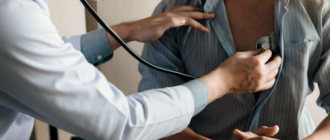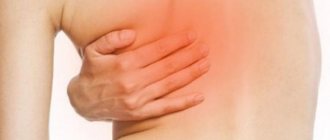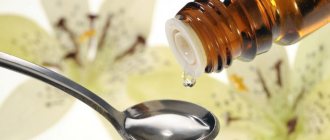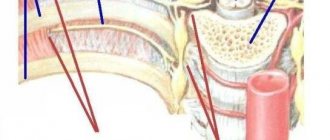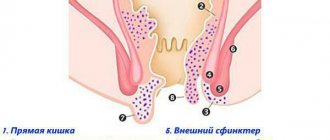Intercostal neuralgia is a pain syndrome: the sensation of pain occurs along one of the intercostal nerves. Acute, “shooting” pain in itself is a rather unpleasant factor, but in the case of intercostal neuralgia it is especially frightening. We usually interpret acute pain in the chest area as cardiac pain. If the nerve running between the lower ribs or the subcostal nerve (running under the lower rib) is affected, we may mistakenly believe that the source of pain is in the abdominal cavity.
1.General information
As you know, ribs are not only part of the musculoskeletal system, but also serve as mechanical protection for vital internal organs: heart, lungs, liver, gall bladder, etc. Therefore, any pain behind or under the ribs should alert you. If pain discomfort in the hypochondrium has become recurrent or chronic, you should definitely consult a doctor: there are simply no problems in this area that can be neglected. But it is, on the contrary, very easy to waste precious time and miss the development of a dangerous pathology, and this happens, unfortunately, all the time in clinical practice.
On the left under the ribs there are many potential sources of pain: individual parts of the intestines, stomach, spleen, pancreas. Heart pain often radiates to the left hypochondrium, but it would be wrong to assume that “any pain on the left is from the heart.” Possible causes are far from limited to cardiac problems.
A must read! Help with treatment and hospitalization!
Pain due to intercostal neuralgia
As neurological diseases develop, irritation or compression of the intercostal nerves may occur. When nerve cells are affected, in patients with intercostal neuralgia the pain sensations can have a very wide range: cramping, pulsating, piercing, sometimes sharp or aching, dull or burning pains develop. A person complains that there is pressure, tugging, numbness, aching, and burning in the lumbar region, under the ribs. Such sensations intensify when breathing - sighing, when inhaling, exhaling, as well as when coughing, pressing on certain points on the back, chest, spine, when tense, changing body position.
During attacks of neuralgia, there is tingling under the chest, periodic muscle twitching, pallor or redness of the skin, and severe sweating.
Patients with neuralgia often ask doctors what is on the left side of a person, since the pain often radiates under the shoulder blade, is felt under the heart, in the abdominal area from above, in the upper back under the shoulder blade, and also in other places when pressed. There is a feeling that it is cutting, “getting in the way” and twitching in different places.
Painful sensations occur at any time of the day, and numbness is noted in those places where the nerve pathways have been damaged.
2. Reasons
The most common causes of pain in the left hypochondrium include:
- diseases of the stomach in their entire spectrum (from mild dyspepsia to peptic ulcer of the stomach and/or duodenum);
- enlargement (splenomegaly) or damage to the spleen (especially bruises with rupture);
- inflammatory processes in the pancreas (pancreatitis);
- malignant neoplasms that have reached a certain size;
- pyelonephritis, calculi (stones) in the left kidney;
- myocardial infarction and (less commonly) other heart diseases;
- osteochondrosis;
- pathology of the diaphragm (usually an abscessing inflammatory process);
- lung damage (pneumonia, metastatic stages of cancer, etc.).
However, this list is not complete. Some neurological and endocrine disorders can also manifest as pain in the left hypochondrium; finally, the reason may lie in damage to the ribs themselves - their bruise or fracture.
Visit our Therapy page
Pain on the left with cardiac pathologies
In the area of the heart, burning pain is not always associated specifically with cardiac pathologies, because a person may be bothered by organs located under the heart. However, if aching pain appears on the left, under the left nipple, simultaneously with shortness of breath , nausea , rapid heartbeat , and this occurs both during exercise and at rest, the development of heart disease can be suspected. The patient may feel heaviness and burning under the sternum. Similar symptoms may appear with coronary heart disease . If the coronary arteries , the blood supply to the heart muscle is disrupted, causing the development of ischemia.
What hurts in the left side below the ribs is also of interest to those who suffer from cardiomyopathy . This is a series of diseases in which the function of the heart is impaired, but there is no arterial hypertension , pathology of the valve apparatus , or vascular disease of the heart . In patients with cardiomyopathies, the heart muscle changes structurally. As a result, a person becomes more tired, colic and a feeling of pain develop during physical activity.
3. Symptoms, diagnosis
Pain in the left hypochondrium, given the huge number of possible causes, is so diverse that its common property can only be considered localization at the edge of the costal arch. However, options are also possible here: pain in the left hypochondrium in the front carries slightly different information than pain on the side or behind. The nagging, tolerable, but almost constant debilitating pain in chronic inflammation of the internal organs is incomparable with the sharp, dagger-like pain in renal colic, perforated gastric ulcer or myocardial infarction.
Therefore, quick and accurate diagnosis of the causes is very important. For this purpose, the most detailed anamnesis is collected, an external examination, palpation (palpation), auscultation (listening), percussion (tapping) is necessarily performed, and for an experienced doctor these “ancient” methods are sometimes as important and informative as the most modern high-tech ones devices. As the situation becomes clearer, additional tests are prescribed and/or the patient is referred to a specialized specialist.
Obviously, in the diagnosis of subcostal pain, imaging methods are of great importance: various types of radiography, ultrasound, and tomography. In some cases, the primary role is given to laboratory analyzes of biological fluids, in others, only a biopsy, endoscopy or diagnostic laparoscopy can provide decisive answers.
About our clinic Chistye Prudy metro station Medintercom page!
Pain on the left in diseases of the spleen
If pain occurs on the left side, one may suspect that the person’s spleen is bothering him.
Where is this organ located and how does it hurt? The spleen is fragile and easily ruptures, so pain develops in any pathological condition of this organ. If the spleen hurts, symptoms of its slight enlargement are difficult to detect, especially in overweight people , since the spleen in humans is located deep in the hypochondrium on the left.
Location of the spleen in the human body
Splenomegaly (that is, enlargement of the spleen) is observed in infectious mononucleosis and other diseases whose causes are infectious lesions. But with this disease, the patient also exhibits fever, muscle pain, intoxication, enlarged lymph nodes and liver .
In the body, the spleen performs different functions, being the largest lymph node, the thinnest blood filter and the largest conglomerate of reticuloendothelial tissue.
Hypertrophy of the spleen occurs if it performs its functions in an enhanced mode due to infectious diseases , hemolytic anemia , and diseases of immune complexes . Its increase in size as a result of this is sometimes the answer to the question of why a person’s spleen hurts.
In addition, there are other reasons why the spleen hurts. The reasons for this may be tumor, trauma, infiltration, developmental defects. The most acute pain occurs after an injury or blow, which leads to rupture of this organ. What to do if this happens, the doctor should determine as soon as possible. When the spleen ruptures, the skin near the navel is also blue, and the pain radiates to the back area. Once such symptoms have been noted, emergency assistance must be called immediately.
4.Treatment
Of course, it would be wrong to talk about the treatment of pain in the left hypochondrium itself, or, even more so, to give some “general approaches” to their treatment. Modern medicine strictly follows the etiopathogenetic principle: at all costs, find the cause and, as far as possible, eliminate it (ideally, eliminate it completely). Considering the special importance of the left hypochondrium zone, the examination should be as thorough as possible, even if it takes a lot of time and requires significant costs, and its results should give, as far as possible, complete, evidence-based, comprehensive answers about the nature and localization of the pathology, probable prognosis options and the most effective methods of treatment ad hoc (Latin for “for a given case”). A common, fully justified and advisable practice is the above-mentioned redirection of the patient to a specialized specialist: it is wiser to entrust the treatment of the stomach to a gastroenterologist, and the lungs to a pulmonologist; and if the initial contact was made to the wrong address, or the reason could not be determined “on the fly,” this does not mean that “doctors are playing tricks on each other” or “grabbing money for examinations.”
In conclusion, we emphasize once again: the causes of pain in the left hypochondrium, as well as the pain itself, are very diverse, but this is always a reason to visit a doctor. And if you are not sure which one, i.e. If you don’t know what exactly hurts—for example, you’ve never had pain before—it’s best to start by consulting a therapist as the most universal of all doctors.
How to treat referred back pain, which doctor to consult
Therapy is prescribed by a specialized specialist. To start, you can see a therapist. Treatment tactics are selected based on the underlying disease that was the source of visceral pain in the ribs. The gastrointestinal tract is examined and treated by a gastroenterologist. A hepatologist specializes in hepatobiliary pathologies. Vertebrogenic pain due to neuralgia and spinal destruction is relieved by a neurologist or vertebrologist. A urologist deals with dysfunctions of the urinary system. A gynecologist helps solve “women’s problems”.
How is jaundice treated?
A special case of the disease is concomitant jaundice due to compression of the common bile duct by a cancerous tumor, therefore, at the first stage, the outflow of bile is surgically restored, and after some time the issue of radical surgery is resolved.
Restoring the patency of the bile duct is possible in several ways, which are selected individually depending on the patient’s condition, the location of the lesion and its size: an expander is installed in the duct - a stent or catheter; a bypass route for the excretion of bile into the intestine is formed.
Clinical manifestations of pancreatic cancer
Since the gland synthesizes pancreatic enzymes and hormones, manifestations of its functional insufficiency are possible: decreased appetite, inadequate insulin production and, accordingly, fluctuations in blood glucose, with progressive weakness and fatigue.
Involvement of large vessels in the cancer process can lead to increased formation of blood clots in the veins of the lower extremities with pain and swelling below the site of blockage of the vessel, and blood clots entering the pulmonary and cerebral bloodstream.
When the tumor compresses the common bile duct, obstructive jaundice develops with persistent skin itching and symptoms of intoxication. With an advanced process, metastasis through the abdominal cavity and intraperitoneal lymph nodes, seeding of the peritoneum with the formation of pathological fluid - ascites, is possible.
Osteochondrosis of the thoracic spine
This disease is very common today.
People who have sedentary jobs are especially susceptible to it. With this pathology, the nerve endings extending from the spine are compressed, which causes pain under the left rib. It often radiates to the back, buttock, and even thigh; it can be encircling in nature, accompanied by numbness and tingling. The fact that the cause of pain is osteochondrosis may also be indicated by a decrease in the mobility of the thoracic region. “Shots” occur not only when inhaling, but also during movements and sudden turns of the body. In most cases, they overtake a person after being in an uncomfortable position for a long time. They often happen during sleep.
Sharp nature of the pain syndrome
The sharp nature of the pain may indicate perforation of the stomach or perforation of the upper parts of the small intestine. This type of pain is a reason to immediately call an ambulance.
Sharp pain also indicates a rupture of the splenic capsule. If the pain becomes girdling, the doctor may suspect an attack of acute pancreatitis. In this case, the discomfort is not associated with changes in body position, sudden movements or coughing.
Sharp pain is a sign of perforation of the stomach walls
When is chemotherapy needed?
Almost always, if the patient’s condition allows it. So after removing the cancer within 6 weeks, it is necessary to begin six-month preventive chemotherapy. If it is not possible to start chemotherapy within three months after pancreaticoduodenectomy and other radical interventions, it is abstained from it until a relapse occurs.
If this is not possible, long-term neoadjuvant chemotherapy is performed at the first stage of the operation, the effectiveness of which determines the likelihood of the operation. After successful resection at the second stage, chemotherapy continues for a total of 6 months; if six months of treatment has been exhausted before resection, then drug prophylaxis is abstained.
